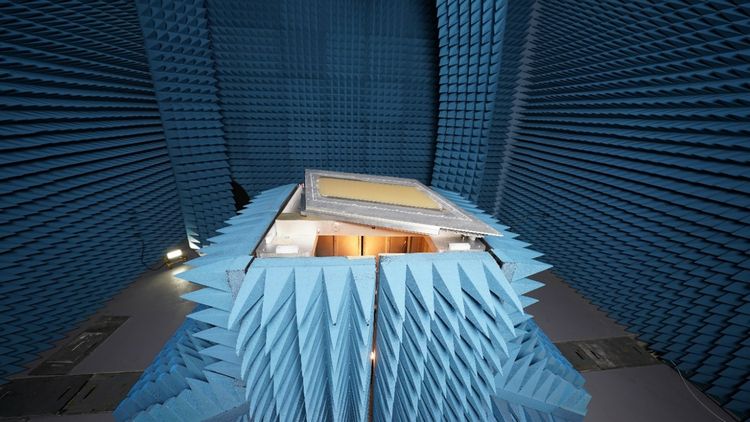
Pictured is Northrop Grumman’s Electronically-Scanned Multifunction Reconfigurable Integrated Sensor (EMRIS) at a Northrop Grumman testing range (Photo: Northrop Grumman)
Northrop Grumman [NOC] said on Feb. 23 that it has begun integration and test of the new ultra-wideband Electronically-Scanned Multifunction Reconfigurable Integrated Sensor (EMRIS) to enable military forces “to accelerate decision timelines and act collectively.”
The company has been developing EMRIS at the Linthicum Heights, Md., campus, which began operations as a Westinghouse site decades ago before its sale to Northrop Grumman in 1996 (Defense Daily, Nov. 2, 2022).
EMRIS’ “fully digital Active Electronically Scanned Array (AESA) utilizes technology from the Defense Advanced Research Projects Agency Arrays on Commercial Timescales (ACT) program combined with government open-architecture standards,” Northrop Grumman said on Feb. 23. “By applying the flexibility of a digital AESA, EMRIS can perform functions including radar, electronic warfare and communications simultaneously.”
“Multifunction apertures consolidate multiple functions into a single sensor, decreasing both the number of apertures needed and the size, weight and power requirements for the advanced capabilities,” the company said. “Sophisticated multifunction apertures like EMRIS can deploy several functions simultaneously…EMRIS was designed using common building blocks and software containerization allowing for rapid, cost-effective production. The sensor’s design leverages commercial processes and materials, including 5G tech base, driving down cost and increasing the quality and reliability of the components.”
Krys Moen, vice president of advanced mission capabilities at Northrop Grumman, said in a statement that EMRIS’ architecture “is easily scaled and reconfigurable, including a variety of mounting configurations, for a wide applicability across platforms and domains” and that EMRIS’ open architecture allows the rapid addition of “new or improved capabilities to increase performance while avoiding redesign.”
Northrop Grumman’s Advanced Technology Laboratory, a semiconductor test site and foundry, is also in Linthicum Heights, and the company builds the AN/APG-81 radar for the Lockheed Martin [LMT] F-35 fighter there, as well as the AN/SLQ-32(V)7 Surface Electronic Warfare Improvement Program (SEWIP) Block 3 for the U.S. Navy and the Multirole Electronically Scanned Array (MESA) radar for the Boeing [BA] E-7 Wedgetail that the U.S. Air Force and foreign nations are buying.
This article was originally published by Defense Daily, a sister publication of Avionics International. It has been edited. Read the original version here >>